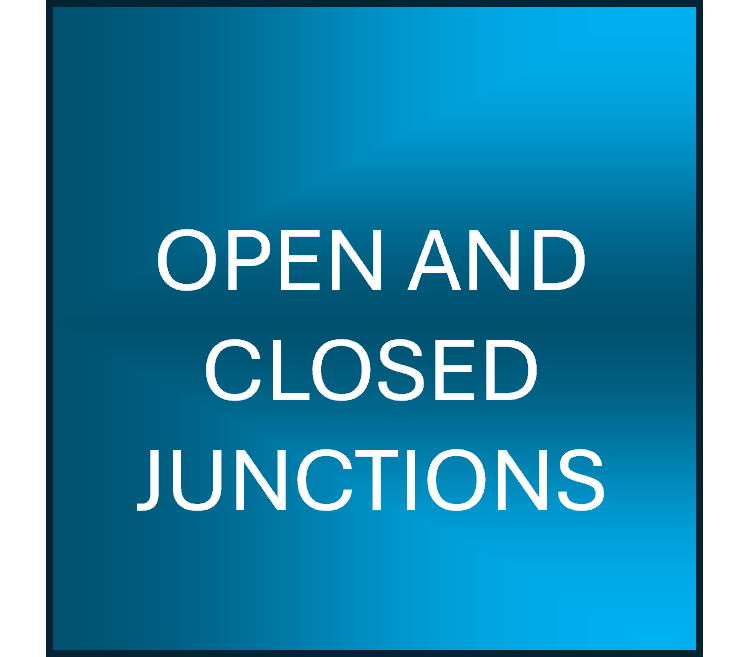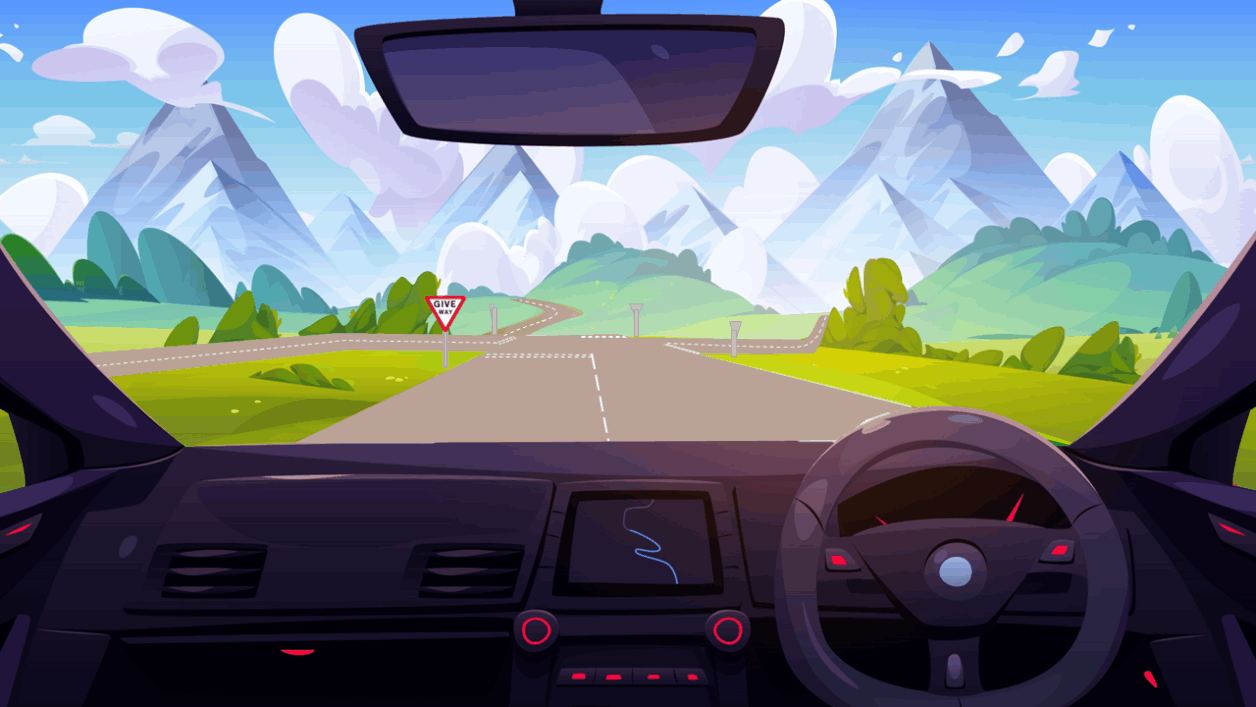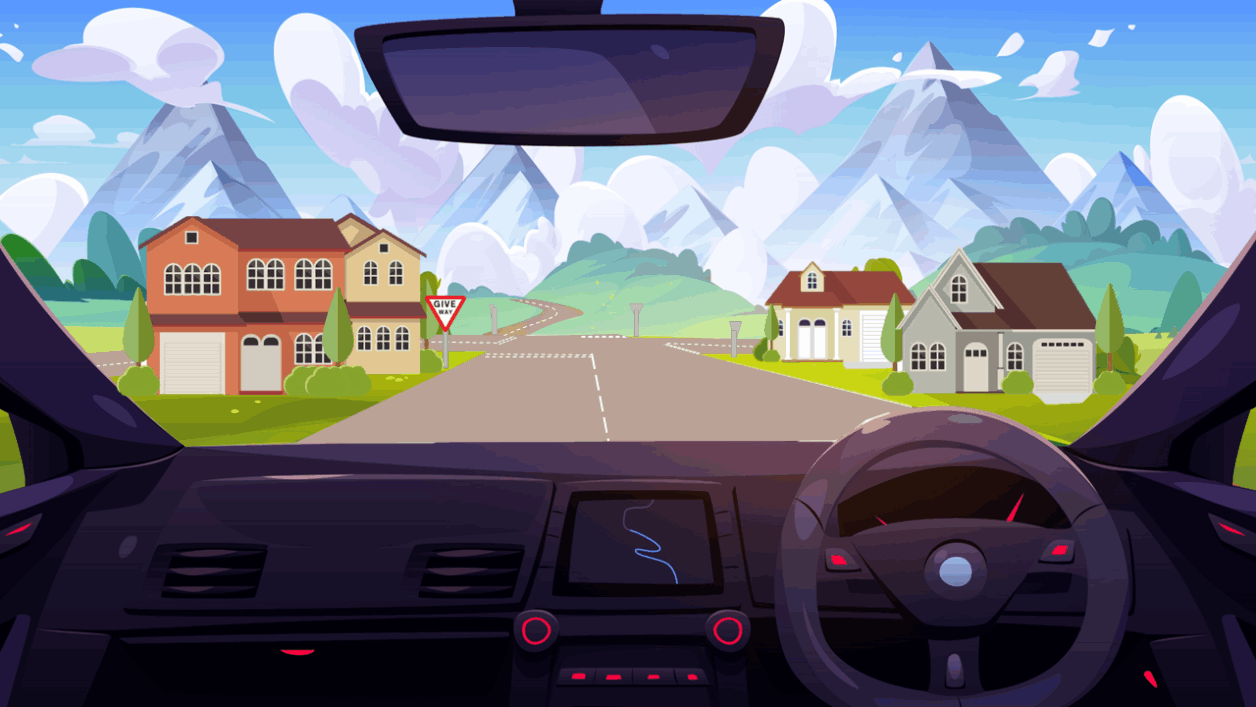
When arriving at a junction, if you cannot clearly see to both the left and right of the junction you should be stopping.

When arriving at a junction, if you cannot clearly see to both the left and right of the junction you should be stopping.

Extremely easy to see that there are no vehicles approaching from the left, right or ahead. This would be a junction that there would be no problem continuing into the road without the need to Give way

The approach to the junction is now a totally different perspective and is now considered a
CLOSED JUNCTION.
It would be unsafe to proceed without checking first that it was safe to do so.
One of the biggest reasons why learners create themselves problems with open or closed junctions is to do with a lack of forward planning.
If you are not looking far enough ahead in the road you are driving on, how will you know when there are junctions, roundabouts, traffic lights etc coming up?
It is too easy to just sit behind another vehicle and react to whatever it is that they are doing, but this is going to create late braking, problems seeing other things going on up ahead, and generally will make your driving a lot mot erratic.
Backing off just a bit (minimum 2 seconds on dry roads) will give you a much better line of sight along the road. It will also allow you to see what vehicle 3, 4 or 5 car lengths ahead are doing, which will allow you to react sooner than just watching the vehicle directly in front of you.
It will open up your line of sight to see pedestrians on the pavement, markings on the road that may say you can no longer overtake, or need to move into another lane, will allow you to see change of speed signs sooner which may avoid you getting a speeding ticket and points on your licence, it will allow you to see junctions earlier or the end of the road or a roundabout coming up.
If you are on a road with just one lane, it is easy to position yourself to the left if turning left at the end of the road.
If you are on a road with just one lane, it is easy to position yourself in the middle of your lane if you are going ahead at a crossroads.
If you are on a road with just one lane, it is easy to position yourself to the right if you are turning right at the end of the road.
BUT!
If there are more than lane lane in the direction of travel you are going, your forward planning is restricted if you are not planning ahead because you are not leaving enough of a gap between you are the vehicle you are following.
You're not being able to forward plan if you don't look further along the road.
Both of these measures are needed to be able to forward plan.
You'll want to be able to see road markings and signs so that you can plan.
You'll want to leave a bigger gap so that you can see things sooner.
By having your speed too fast and not planning ahead to see the end of the road coming up, you are going to make your drive quite uncomfortable for any passengers you may have, and additionally you put extra wear and tear on your own vehicle by braking harder as well as costing you more on fuel consumption.
If your approach speed to a junction is what it should be, and with the correct routine implemented on the approach to it, you will clearly be able to understand early, if the junction is an open or closed junction, and you will have time to assess the situation to whether you continue into the new road without stopping or whether you will have to stop completely before emerging.
The fails that tend to happen on driving test in the category of observations at junctions, tends to come from a lack of planning on the approach.
The reason why the fault has been recorded is not necessarily because you didn't look per se, but it's because everything on the run up to the junction was not implemented correctly which then didn't give you enough time to carry out the observations.
SLOW DOWN ON THE APPROACH! CARRY OUT YOUR APPROACH ROUTINE EVERYTIME!
AND BEFORE EMERGING ENSURE THAT IT IS SAFE TO DO SO IN ALL DIRECTIONS!
Do this at every junction and you'll not receive any faults!